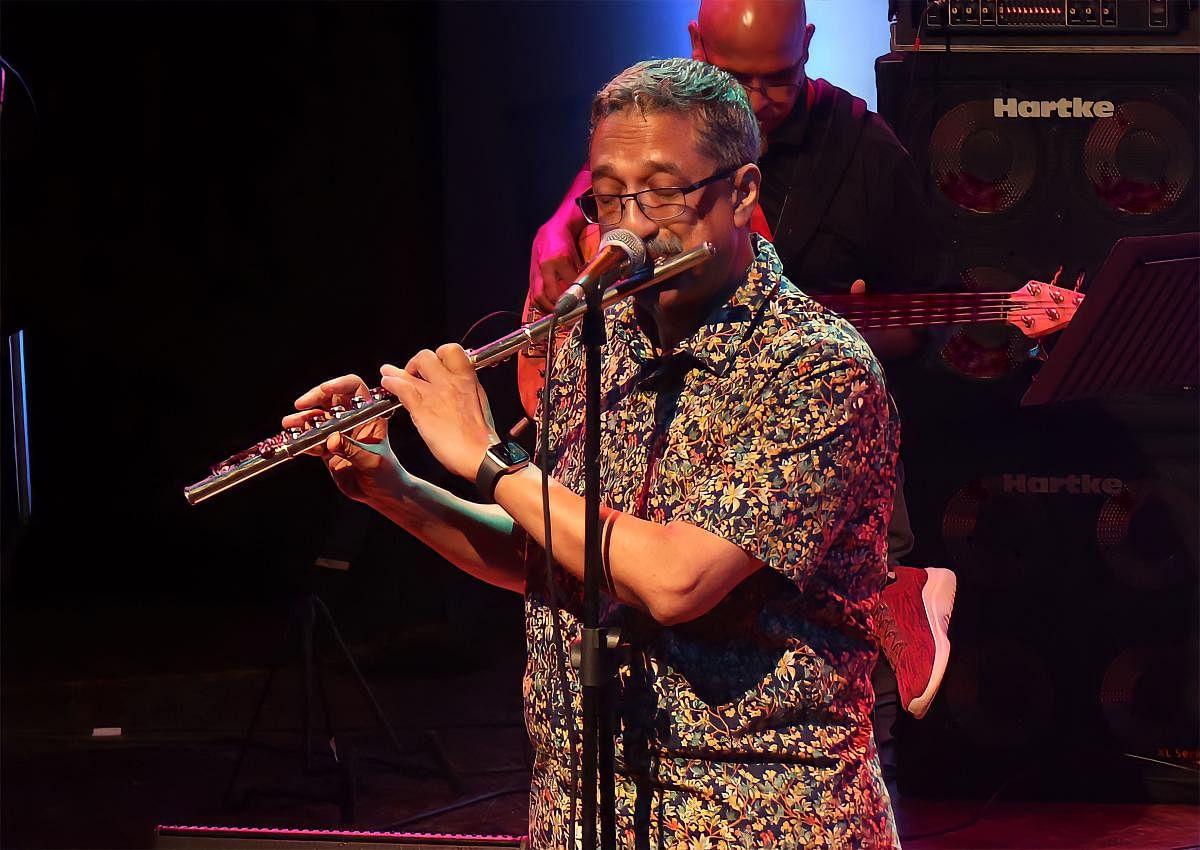Rajeev Raja, the flautist who mesmerised the Bengaluru college crowd in the ‘80s, has evolved a genre that’s ‘Ethno jazz’ or ‘World jazz’. Inspired by the form of jazz, his music is a seamless, organic blend of the music of various ethnicities from India, Latin America, Eastern Europe, and Africa.
The frontman of the eponymous Rajeev Raja Combine, the Bengalurean-turned-Mumbaikar performed in a concert in Bengaluru recently. Raja spoke to Showtime about living a life that’s all about music. Excerpts:
How has your music evolved over the years?
I think it has reached a stage where all the hard work, experience and wonderful learnings of performing with many great musicians are coming together. Now, it is more about expressing my musical soul and essence, and touching the audience rather than impressing them with my skill.
What is the secret sauce that you seek in a musical collaboration?
When I started Rajeev Raja Combine I had a modular concept in mind of a core group of musicians who understood the space that I was coming from and were willing to join me in the journey of expressing that kind of music. And modular because I would keep changing the satellite musicians depending on the concert or the occasion or the event.
The secret sauce that I expect really is collaboration, spontaneity, improvisation and above all a sense of humanity. Respect for each other, understanding for each other and yeah, just joyousness of loving every bit of the music that we play.
Your band’s first album ‘Cosmic Chant’ came out in 2013 and topped the iTunes charts for several weeks. You gave us a taste of the songs that will feature in your next album in your recent concert...
The whole idea with the concert ‘Jazzplorations’, which is also the name of our upcoming album, as with ‘Cosmic Chant’, was to express the various influences of music that have struck me. It is an exploration of several emotions that we would like the audience to experience.
‘Seville’, is a very joyful kind of expression. Compositions like ‘Croatia’ or ‘Deogadh’ exude a sense of nostalgia, even melancholy. ‘Sanjeevani’ is meant to evoke a sense of peace. ‘Jazzplorations’ the album should be out this year.
Mumbai is the mecca of advertising, music, theatre and films. Would you attribute your success to moving there?
Moving to Mumbai was very challenging and exciting. I rubbed shoulders with giants in advertising. I was also fortunate enough to play with giants of music. I played with Fazal Qureshi’s band Surya, which had Shankar, Taufiq Qureshi, and Salim (of Salim-Sulaiman fame). I’ve played with many incredible musicians, including Louis Banks and Gino Banks. I have even jammed with Arturo Sandoval (Cuban-American trumpet legend).
Moving to Mumbai was probably the best thing that happened to me because it suddenly widened my canvas and I had to run very hard to compete. But one should not forget that I got my foundation in Bengaluru because of the atmosphere, the people, and the love for the arts, music and theatre. I would never attribute my success to Mumbai alone. It may have been the catalyst, but Bengaluru set the foundation.
You managed to balance advertising and music for almost 25 years. Why did you quit advertising?
That was quite a tightrope walk I did for 25 years. But, it was a fantastic ride. I reached a certain stage where I was very senior in the totem pole, and I couldn't find the time for music. By my own standards, I wasn't measuring up to the really good full-time musicians because I wasn't able to give enough time to my flute. There was a moment of introspection, and music won because it was truly my life. The choice was easy, but the decision was scary.
How did you get the idea for sonic branding? And how is it doing?
It was the coming together of the brands and music that led to the concept of ‘sonic’ branding. We went to the science of sound, and how sound affects human emotions. We linked it to the personality and values of a brand, creating a unique sonic identity for brands. I also created a term called ‘Mogo’ or musical logo. Today, my company, Brandmusiq, is doing well with Indian and international clients and offices in Mumbai, LA and Dubai.
How would you describe the Jazz music scene in India?
There are loads of talent coming. Jazz will always live, but it will always live for a certain section of the audience.
Chandana Bala Kalyan, your bandmate, says you are a walking treasure house of jazz lore. Share something with us.
Dave Brubeck and Paul Desmond visited India in the 60s and met with our tabla/mrdungam exponents. This interaction inspired the now iconic composition ‘Take 5’, which is composed in a rhythmic cycle of 5 beats to a bar instead of the more commonly used 4 beats to a bar in Western music.
(The writer is an author and cultural evangelist).
